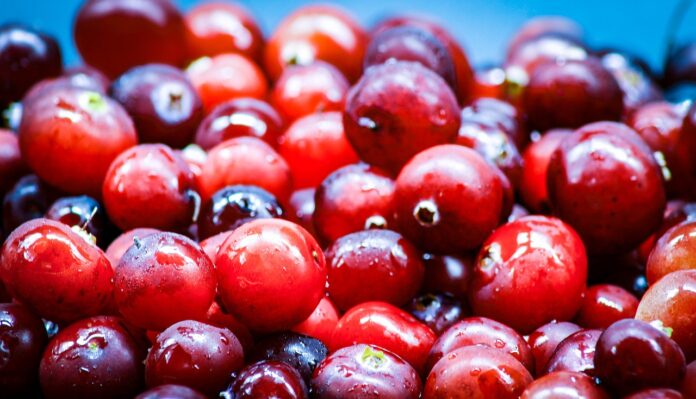Cranberries are one of North America’s native fruits, known for their tart flavor, rich color, and versatility in both culinary and medicinal uses.
By the 19th century, cranberries had become a commercial crop in the United States, with the first successful cultivation taking place in Massachusetts. Today, the United States is one of the largest producers of cranberries in the world, with Wisconsin, Massachusetts, New Jersey, Oregon, and Washington being the top cranberry-producing states.
The Great Cranberry Scare of 1959
One of the most significant events in cranberry history is the Great Cranberry Scare of 1959, which had a profound impact on the industry. Just weeks before Thanksgiving, the U.S. Secretary of Health, Education, and Welfare announced that some cranberry crops had been contaminated with aminotriazole, a weed killer that had been found to cause cancer in laboratory rats.
This announcement led to widespread panic, and consumers avoided cranberries in droves, causing sales to plummet. The scare dealt a severe blow to cranberry growers, who were left with millions of pounds of unsold fruit. In an effort to reassure the public, President Dwight D. Eisenhower served cranberries at his Thanksgiving dinner, and the industry slowly recovered. The event, however, remains a cautionary tale about the impact of food safety concerns on consumer behavior.
Interesting Facts About Cranberries:
- Cranberries have been used by indigenous peoples for centuries, not only as food but also as a natural dye for fabrics and a healing agent for wounds.
- The name “cranberry” comes from the term “crane berry,” coined by early European settlers in America because the plant’s flowers resemble the head of a crane.
- Cranberries are one of the few fruits native to North America and were an important food source for Native American tribes, who introduced them to the Pilgrims.
- The tartness of cranberries comes from their high content of organic acids, particularly citric and malic acids.
- Cranberry bogs are artificially created environments where cranberries are grown commercially. These bogs are flooded during harvest to make it easier to collect the berries, which float to the surface.
- Cranberries have a natural preservative quality, which is why they were historically used to preserve meat in the form of pemmican.
- During World War II, American soldiers were provided with cranberry rations as part of their field diet because of the berry’s high nutritional value and long shelf life.
- Cranberries are often used in holiday dishes, especially in the United States and Canada, where cranberry sauce is a traditional accompaniment to Thanksgiving turkey.
- Some cranberry varieties can withstand temperatures as low as -40°C (-40°F), making them one of the hardiest fruit-bearing plants.
- The juice from cranberries is often blended with other fruit juices, such as apple or grape, to balance its tart flavor.
